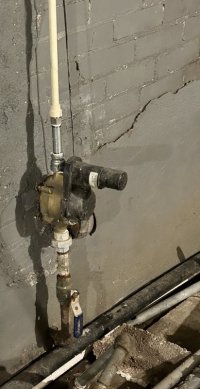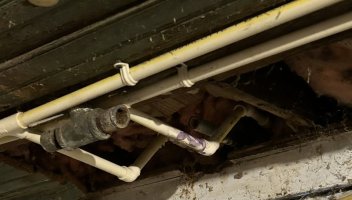lindsayA
New Member
A little bit of history first. Our house was built in 1920. We live in southern Illinois. We have a 3 bedroom/1 bathroom house we are remodeling. The water pressure in the kitchen sink has decreased within the last year. The shower pressure has never been great. We have tried multiple sinks and shower heads with no luck. The house had metal pipes and my husband had been replacing as he went with pvc. Since he had the day off yesterday he replaced all of the metal pipes in our basement with pvc thinking that would solve the water pressure problem. No such luck. I have no knowledge of plumbing and he doesn’t have a ton but he doesn’t want to hire somebody. I can take more pictures if you let me know what you need. Thanks for any advice or troubleshooting you can provide!





